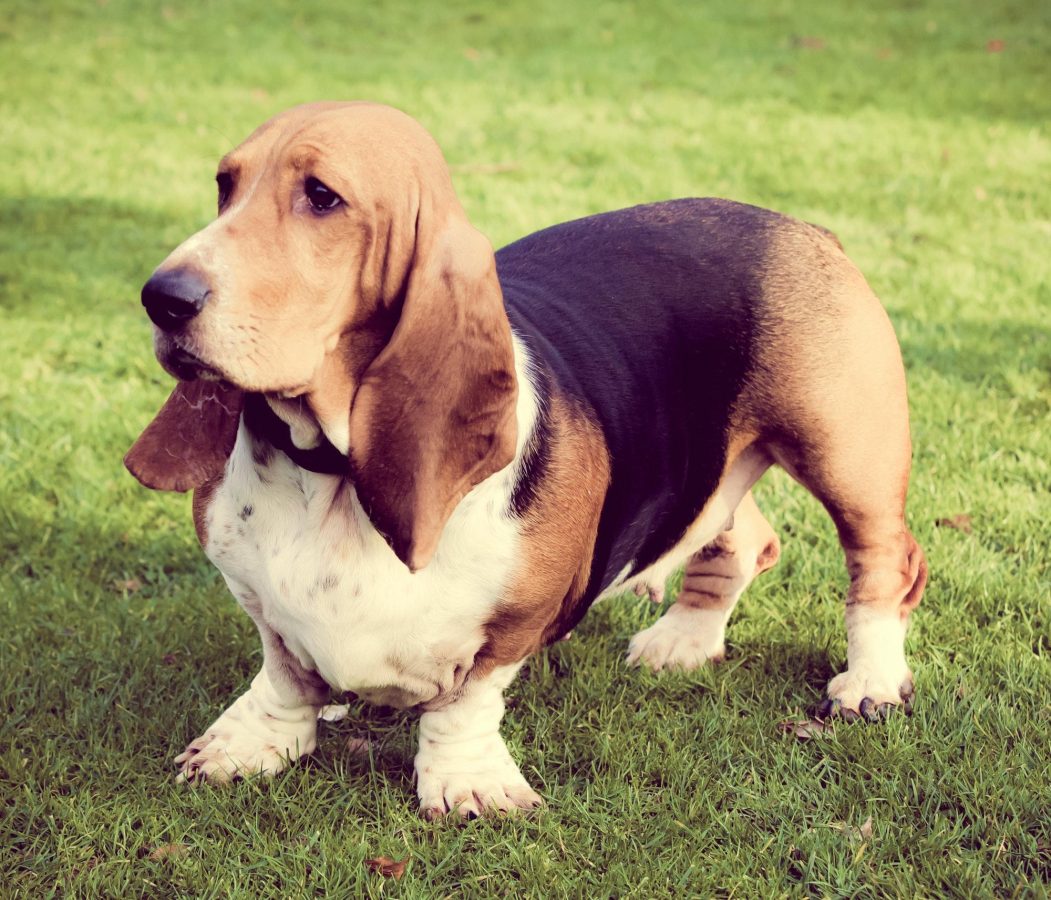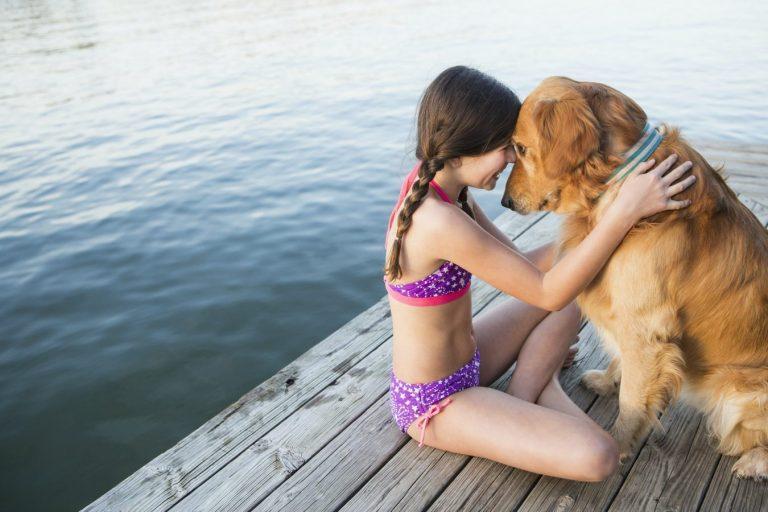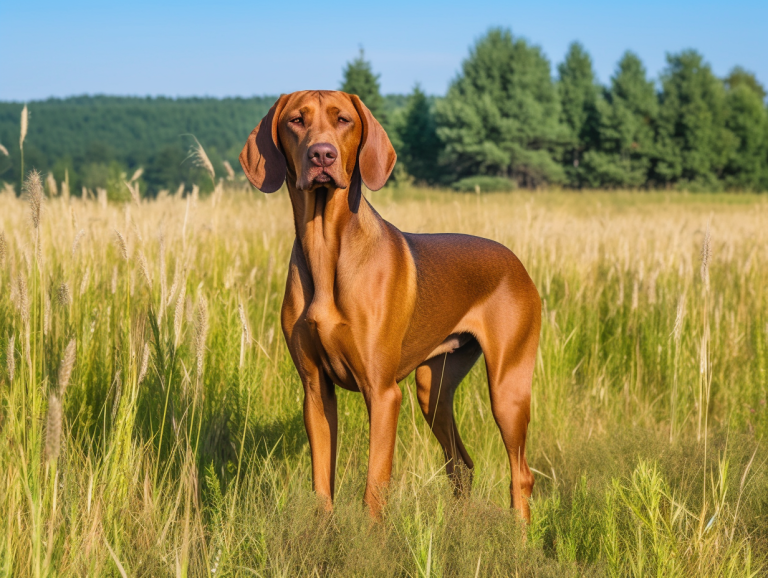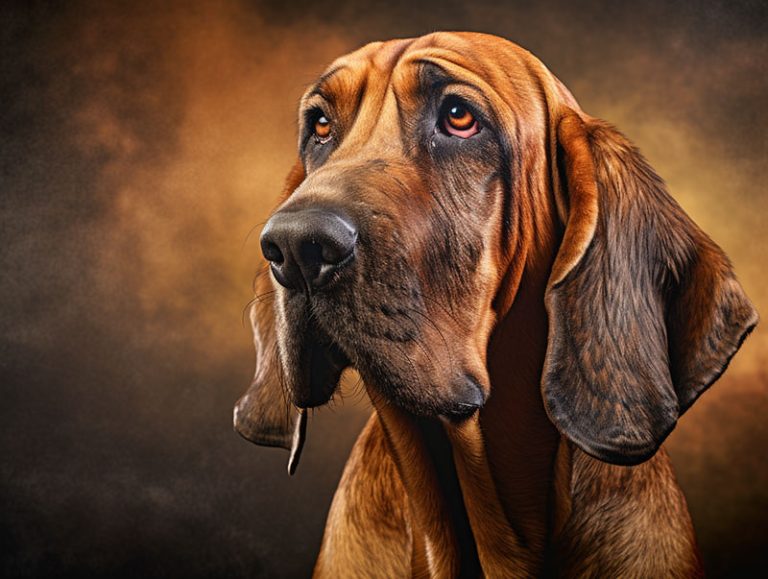Basset Hound Nose is 2nd Only to One
Basset Hound History
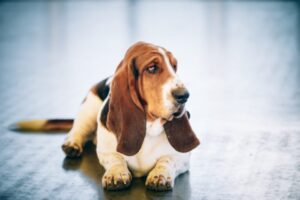 The Basset Hound has a sense of smell second only to the Bloodhound. That might be because one of the ancestors of today’s Basset Hounds was a Bloodhound. In the late 1800s, an English dog breeder, Everett Millais, bred a Basset Hound with French ancestry to a Bloodhound. The pups from that litter became the foundation stock of the modern Basset Hound.
The Basset Hound has a sense of smell second only to the Bloodhound. That might be because one of the ancestors of today’s Basset Hounds was a Bloodhound. In the late 1800s, an English dog breeder, Everett Millais, bred a Basset Hound with French ancestry to a Bloodhound. The pups from that litter became the foundation stock of the modern Basset Hound.
The Basset Hound’s ancestry returns to dogs exported to Europe from Greece. During the 6th century, some of these dogs found their way to the Benedictine abbey of Saint-Hubert, Belgium, eventually becoming St Hubert’s Hounds.
The Basset type of dog originated in France and is related to the hounds St. Hubert of Belgium owned in the sixth century. By breeding at the Benedictine Abbey of St. Hubert, this hound finally evolved into what is now known as the St. Hubert’s Hound in 1000 AD.
The Laconian (Spartan) Hound, one of four dog types identified from Greek images and descriptions, is the ancestor of St. Hubert’s original hounds. These dogs were described as massive, slow, “short-legged and deep-mouthed,” with a tiny head, straight snout, upright ears, and long neck, and either tan with white markings or black with tan markings.
According to legend, Laconian Hounds would keep following their prey’s smell until they discovered it. They eventually made it to Constantinople and then traveled to Europe from there.
Arrival in England
The first Bassett Hounds arrived in England during the late 1800s. By the end of the 19th century, English breeders developed the breed standard for the dogs now known as Basset Hounds. Eventually, there were different versions of these short-legged hounds. One of these versions, the [wiki]Basset Artésien Normand[/wiki], closely resembles today’s Basset Hound.
Hunters on horseback could keep up with faster dogs, but hunters on foot had an easier time keeping up with the slower, short-legged hounds. The low, slow ancestors of the Basset are just the dog for this type of hunting.
Arrival in the United States
The Basset Hound arrived in the United States in the early 19th century. The breed was initially used for hunting rabbits and other small game, but it quickly gained popularity as a companion dog due to its affectionate nature and distinctive appearance.
The Basset Hound was recognized by the American Kennel Club (AKC) in 1885, just a few years after the AKC was founded. This made the Basset Hound one of the earliest breeds to be recognized by the AKC and it has remained a popular breed in the United States ever since.
The Basset Hound Club of America is this breed’s parent club of the AKC.
Personality
 The low, slow Bassett Hound is one of the most laid-back and relaxed dog breeds. They are amicable and get along well with virtually every animal and human they meet. Bassets are very good for children. Although they may be very friendly, these Hounds make excellent watchdogs.
The low, slow Bassett Hound is one of the most laid-back and relaxed dog breeds. They are amicable and get along well with virtually every animal and human they meet. Bassets are very good for children. Although they may be very friendly, these Hounds make excellent watchdogs.
Bassets may be amiable, but they can also be stubborn. You will need to treat your dog with firm patience.
They are renowned for their vocal prowess and devotion to tracking. Prospective owners need to be ready to handle Bassets with patience and firmness.
Taking Care Of Your Basset
Basset Hounds do need daily exercise, but not too much. One or two daily walks should be enough. Bassett Hounds should always sleep indoors with the family at night. During the day, they should have access to an enclosed yard.
Their grooming needs are minimal. Routine brushing and bathing will get the job done.
 The adorable and instantly identifiable Basset Hound is one of the most alluring AKC breeds and a steadfast favorite of dog lovers everywhere. This modest and low-key dog is usually endearing despite occasionally being difficult.
The adorable and instantly identifiable Basset Hound is one of the most alluring AKC breeds and a steadfast favorite of dog lovers everywhere. This modest and low-key dog is usually endearing despite occasionally being difficult.
The Basset Hound is only about 15 inches tall at the shoulder, but he has big-dog strength and endurance thanks to his incredibly thick bone, tiny solid legs, and giant paws. They weigh between 45 to 60 pounds.
Bassets are renowned for their vast, domed heads with mournful eyes, long, silky ears, and furrowed brows that give the breed the appearance of a sad clown.
Many Bassets have a distinct white blaze and tips to their tails to help hunters locate their dogs when tracking through the brush.
Like all dogs’ coats, the Basset Hound’s coat is naturally oily. Their oil has an unmistakable “dog fragrance” inherent to the breed.
Health Information
Basset Hounds have a lifespan of 9 to 12 years. They have long, drooping ears that you should frequently clean to prevent infections.
Bassets have a condition called achondroplasia. They have large bones that make them at risk for elbow dysplasia and arthritis of the elbow joint.
Bassets have droopy eyes that may cause eye issues if the area beneath their eyes becomes clogged or dirty. Because they drool, they are susceptible to yeast infections in the folds around their mouth.
Basset Hounds love to eat. Obesity is often a problem with these dogs, so you should carefully monitor how much food they eat.
Conclusion
Basset Hounds are a prevalent breed of dogs due to their unique appearance and amiable personality. Basset Hound puppies make excellent family pets, but prospective owners must be prepared for the challenge of training them, as they can sometimes be stubborn. Bassett Hounds need daily exercise, regular brushing and bathing, and a watchful eye on their diet to stay healthy. With patience, consistency, and love, though, you will find that these adorable hounds quickly become beloved members of your household.
